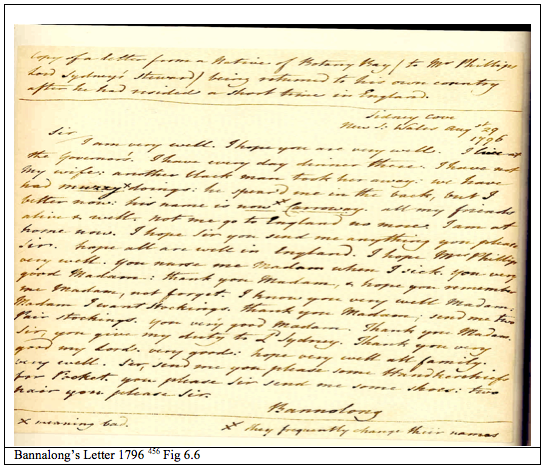Cue 11. mm. 10 – The Bernier transcription of Chant (mm. 30 ;std.rec 3:57; perf. 3:34) is played at a faster pace in the live performance than previously in pieces 1-3. Richard Green is evoking the women singing on the harbour, ‘singing up the fish’.
Cue 12. Piano improvisation in the lower registers, in 5/8 metre.
Cue 13. Harry’s Chant 4/4 – lower registers of the Stuart piano used percussively,
Cue 14. mm.41 Gymea! flower, Mulla! man, Mallabu! two men, Gumang! – grandfather
Byal-la , to speak (No.5)
The bass frequency sustain of the Stuart piano is clearly evident and distinctive in the final chord of the studio recording.
Byalla is a word derived from the Sydney word, biyal453 and byala 454, meaning to speak.
Byalla is the final piece of the Yabun Yaguna, Wuganmagulya series. Byalla is a song of Wollarawarre Bennelong’s words, written in 1796. after his return from England , to Lord Sydney. In the letter Bennelong describes two events in his life that the song features in musical repetition of the words-
‘I have not my wife’ …. ‘his name is Carraway….’ ,
‘you nurse me madame…. ’ ‘we have had murray doings here’…. .
Bannalong’s Letter 1796 Fig 6.6
Wollarawarre Bennelong’s dictated these words to the Governor’s letter writing scribe in the mail room of Government House Sydney Cove.

453 5Troy, 145-170.
454 4 Richard Green,
455 Letter [manuscript] : Sydney Cove, New South Wales, to Mr Phillips 1796 Aug. 29
Source: National Library of Australia, Manuscript reference no. : NLA MS 4005




